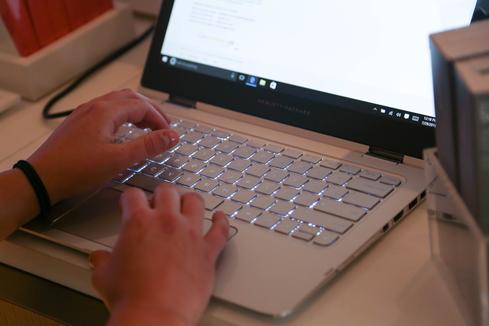Microsoft HoloLens Ready For Developers, EnterprisesMicrosoft HoloLens Ready For Developers, Enterprises
Microsoft has learned a lesson from Google Glass. The company's HoloLens is designed for developers who want to create enterprise, not consumer, applications.


Windows
Windows 10: NYC Debut, Hands-On Demo (Click image for larger view and slideshow.)
When Microsoft CEO Satya Nadella talked with the BBC just after the release of Windows 10 about his company's evolving product line, he gave the first realistic time frame for the delivery of HoloLens -- Redmond's much-discussed augmented reality viewer.
Specifically, Nadella pledged that developers and commercial users will get their hands on the first version of it "within the next year." He added the company's AR wearable is on "five-year journey" and that it "will arrive in the Windows 10 timeframe."
A personal version of HoloLens was not addressed, and for good reason.
First, HoloLens is tightly bound with the Windows 10 operating system.
Microsoft says on its website that Windows 10 will "support holographic computing with APIs that enable gaze, gesture, voice, and environmental understanding on an untethered device." Untethered means that there are no wires, phones, or connections to a PC needed in order to be operable.
So, the hooks for this kind of device are buried inside of Windows 10. Not only that, but "[…] holograms are Windows universal apps, and all Windows universal apps can be made to work as holograms."
What does this mean? Specifically, Microsoft is telling us that HoloLens is not a VR device by design. It does not immerse the wearer in an environment. It will place a generated visual layer over the real world that a user sees.
Fo the future, then, think of HoloLens primarily as a business tool, not something you would see in the consumer space. This is also in keeping with Microsoft's gradual moving away from the consumer market, while strengthening its ties to the market it knows best -- the enterprise.
As the company says, "Microsoft HoloLens will be a revolutionary tool for businesses -- transforming how companies, designers, and creators work with three-dimensional data to bring products and information to life."
[Read about what Microsoft is doing beyond Window 10.]
This assumption about their target market may be valid, since the price of the wearable is likely to be high given the prototypes that have been shown.
The optics alone are more complex than the Google Glass device, and that was priced right out of the consumer market from the get-go. The optics are the key to how light gets interpreted by the user as matter.
The processing unit of the HoloLens is also said by Microsoft to "contain more computing power than the average laptop." It works with the embedded sensors -- which grew out of the ones in the Kinect gaming accessory -- to generate positional information used in producing the resulting image.
It seems most likely that Microsoft will go with enterprise and commercial users first with HoloLens, following what Google is doing with its enterprise version of the Glass wearable. Both devices are pricey for consumers, who may be satisfied with VR rather than AR.
Microsoft has also announced a HoloLens academic research grant.
With a submission deadline of Sept. 5, it is designed to fund academic research proposals regarding how holographic computing will, in Microsoft’s words, "help people create, learn, communicate, collaborate, work, and play in new ways." Recipients will get two Microsoft HoloLens devices and $100,000 towards funding.
About the Author
You May Also Like






